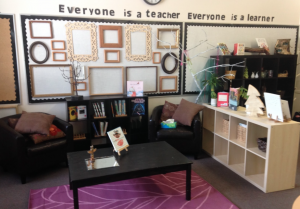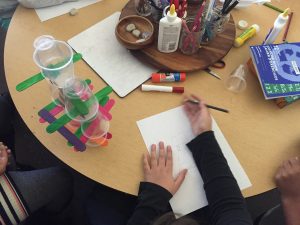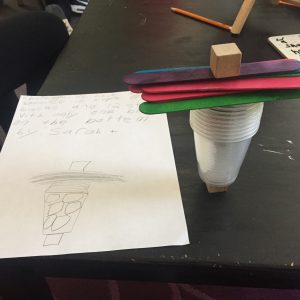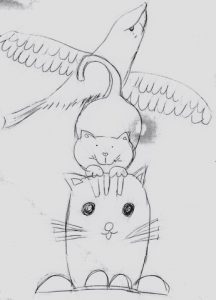This grade 2/ 3 class that I visit has ongoing nature projects throughout the school year. They have observed buds, planted buds, visited a bog as one of their field trips etc. They have natural materials for decorations and nature picture books on the bookshelf. Today the students are reflecting on their bog field trip from yesterday and doing some drawing and writing on their Nature Book. This Nature Book is handmade, and it has cardboard as its cover. It uses recycling materials to explain to the students that we are trying to create an environmentally friendly space.


Before the students worked on this project, the teacher laid out several questions for them to think about. For example, the questions cards on the table where the students display their nature material collections. Also, the teacher wrote down a question on their agenda board in the beginning of the day to get the students start to think.
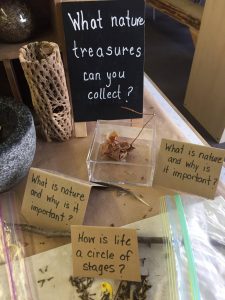
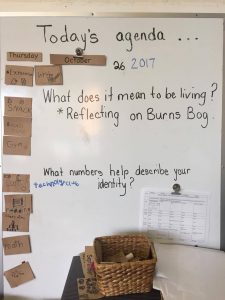
Since this is an ongoing project, the teacher does not need to spend too much time introducing this topic. Students are expecting the topic to come up. Moreover, when students are aware of the topic, they usually feel more ready or confident to participate in the class too.
New projects or plans are usually introduced in a circle with everyone gathered around. One strategy that the teacher uses to bring students’ attention is to wait until everyone is quiet and ready to listen. The teacher will wait patiently until everyone is quiet. It really helps to gather students’ attention and make sure that the teacher does not need to repeat herself.




